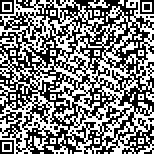| 本文已被:浏览 186次 下载 57次 |

码上扫一扫! |
|
|
| 老年2型糖尿病合并肌少症患者中医证素临床特点分析 |
|
肖岩岩1, 许嘉慧1, 田静1, 陈媛1, 周天锴1, 王超1, 陈驰1, 韩煦1, 陈清光1, 赵进东2, 徐隽斐1, 陆灏1
|
|
1.上海中医药大学附属曙光医院内分泌科, 上海 200021;2.安徽中医药大学第一附属医院内分泌科, 合肥 230031
|
|
| 摘要: |
| [目的] 分析老年2型糖尿病合并肌少症患者中医证素分布规律和组合特点,为中医辨证论治提供客观、科学的参考依据。[方法] 通过横断面调查,收集200例老年2型糖尿病合并肌少症患者的四诊及相关信息,分析目标患者的一般情况,采用证素辨证法,运用频数、R型聚类分析等统计方法,以证素辨证理论为基础,得出该疾病的证素、证型分布特征及组合规律。[结果] 纳入患者男女比例约为5∶2,男性患者明显多于女性患者。老年2型糖尿病合并肌少症患者主要集中于身体质量指数(BMI)正常组。老年2型糖尿病合并肌少症病位证素以肝(44.5%)、肾(41.0%)、脾(18.0%)为主,病性证素以血虚(80.1%)、阴虚(64.0%)、气虚(48.5%)、阳虚(43.5%)为主,血虚尤其多见。聚类分析可将该病证聚为3种证型:肝阴血虚(67.0%)、肾阳气虚(26.0%)、脾胃痰湿气滞血瘀(7.0%)。[结论] 2型糖尿病合并肌少症在老年人群中,病位侧重于肝,与肾、脾密切相关,病性侧重于血虚,与阴虚、气虚、阳虚密切相关。临证注意老年人特点,辨证病位以肝、脾、肾为先,以补虚为主,尤其是补血,本研究结果在一定程度上反映了老年2型糖尿病肌少症主要证素特点,对该病临床中医辨证治疗有一定的参考价值。 |
| 关键词: 2型糖尿病 肌少症 中医证素 |
| DOI:10.11656/j.issn.1672-1519.2024.10.03 |
| 分类号:R587.1 |
| 基金项目:国家自然科学基金项目(82074381,81874434);上海市科委科研计划项目(21S21900700);上海市中医临床重点实验室(20DZ2272200);长三角中医内分泌代谢病专科联盟[ZY (2021-2023)-0302];上海中医药大学科创项目(YYKC-2021-01-145);上海市卫生健康委员会中医药科研项目(2022_QN092)。 |
|
| Analysis of clinical characteristics of Chinese medicine evidence in elderly patients with type 2 diabetes mellitus combined with sarcopenia |
|
XIAO Yanyan1, XU Jiahui1, TIAN Jing1, CHEN Yuan1, ZHOU Tiankai1, WANG Chao1, CHEN Chi1, HAN Xu1, CHEN Qingguang1, ZHAO Jindong2, XU Junfei1, LU Hao1
|
|
1.Department of Endocrinology, Shuguang Hospital Affiliated to Shanghai University of Traditional Chinese Medicine, Shanghai 200021, China;2.Department of Endocrinology, The First Affiliated Hospital of Anhui University of Traditional Chinese Medicine, Hefei 230031, China
|
| Abstract: |
| [Objective] To analyze the distribution pattern and combination characteristics of traditional Chinese medicine(TCM) evidence elements in elderly patients with type 2 diabetes mellitus combined with sarcopenia,and to provide an objective and scientific reference basis for TCM treatment based on pattern identification. [Methods] Through a cross-sectional survey,the four diagnostic methods and related information of 200 elderly patients with type 2 diabetes mellitus combined with sarcopenia were collected to analyze the general conditions of the target patients,and the distribution characteristics of the evidence elements and patterns of the disease and the combination pattern of the feet were obtained by adopting the method of evidence element identification and using statistical methods such as frequency counting,R-type cluster analysis,and based on the theory of evidence element identification. [Results] The ratio of male to female patients is about 5∶2,and there were significantly more male patients than female patients. Elderly patients with type 2 diabetes mellitus combined with sarcopenia were mainly concentrated in the group with normal BMI. The pathogenic elements of type 2 diabetes mellitus combined with sarcopenia in the elderly were mainly liver(44.5%),kidney(41.0%),and spleen(18.0%),and the pathogenic elements were blood deficiency(80.1%),yin deficiency(64.0%),qi deficiency(48.5%),and yang deficiency(43.5%),and the deficiency elements were mainly,and the blood deficiency was especially common. Cluster analysis clustered the symptoms into three types:liver yin and blood deficiency(67.0%),kidney yang and qi deficiency(26.0%),and spleen-stomach phlegm-dampness and qi stagnation and blood stasis(7.0%). [Conclusion] Type 2 diabetes mellitus combined with sarcopenia in the elderly population focuses on the liver,which is closely related to the kidney and spleen,and focuses on blood deficiency,which is closely related to yin,qi,and yang deficiencies. The clinical evidence pays attention to the characteristics of the elderly,the identification of the disease locus focuses on the liver,spleen,and kidney,and the focus is on supplementing the deficiency,especially on supplementing the blood. The results of this study reflect some extent the characteristics of the main evidence of type 2 diabetes mellitus with sarcopenia in the elderly,and it has a certain value of reference for the treatment of this disease in clinical Chinese medicine identification and treatment. |
| Key words: type 2 diabetes mellitus sarcopenia TCM syndrome element |
